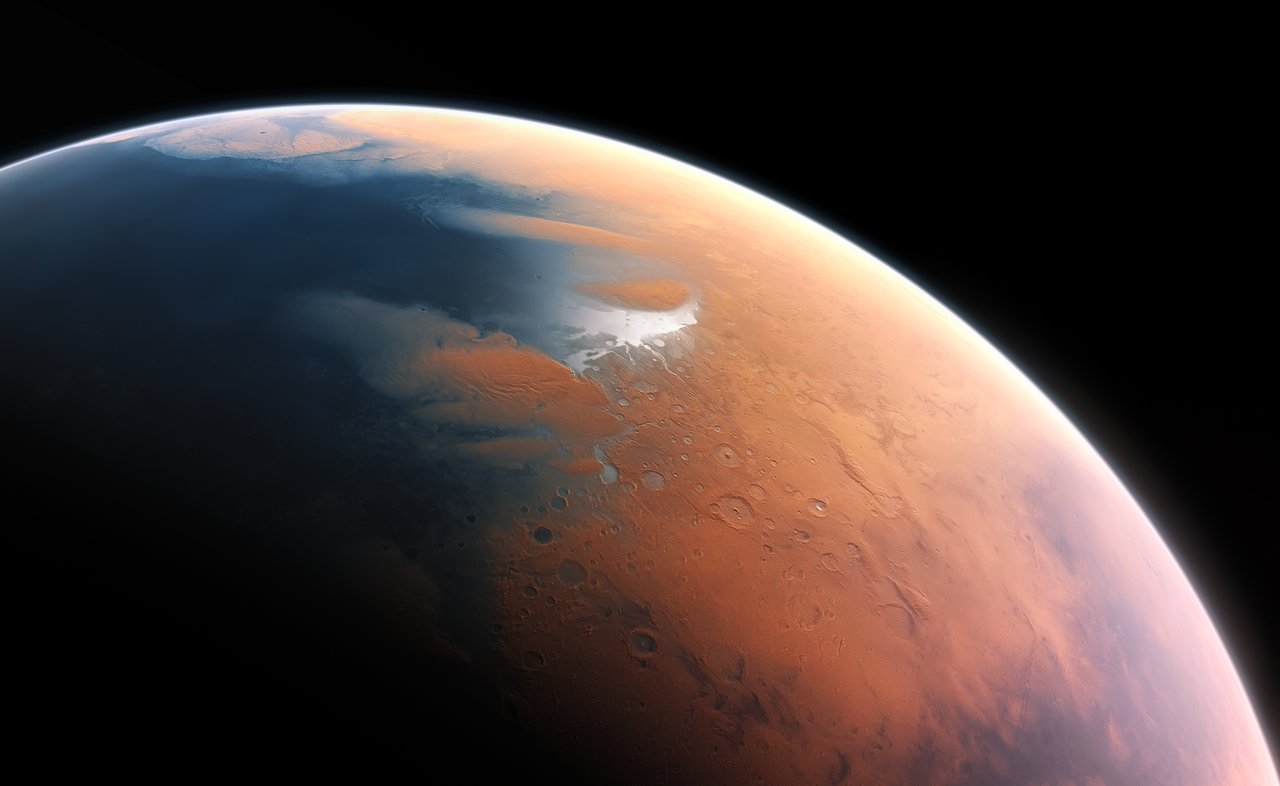For centuries, the Red Planet has captured humanity’s imagination. From the speculative writings of H.G. Wells to the ambitious plans of Elon Musk, Mars has evolved in our collective consciousness from a mysterious celestial body to a tangible target for future colonization. As space agencies and private companies invest billions into Martian exploration, the question is no longer if we can reach Mars—but when we’ll live there. So what does the future of human life on Mars look like? And how does this fit into the broader evolution of space exploration?
Why Mars? The Red Planet’s Unique Allure
Among all the planets in our solar system, Mars is the most Earth-like. It has polar ice caps, mountain ranges, and what appears to be ancient river valleys. A Martian day is just 40 minutes longer than Earth’s, and seasonal changes occur as they do here. Mars also sits within the Sun’s “Goldilocks Zone”—close enough to receive solar energy but far enough away to have preserved its own geological history.
Still, the planet is no paradise. With an atmosphere composed of over 95% carbon dioxide and surface temperatures that can plummet to -125°C (-195°F), surviving on Mars would require advanced technology and sustainable systems. But for many scientists and engineers, those challenges only make the prospect more exciting.
The Road to Mars: Progress in Motion
1. Robotic Explorers as Trailblazers
Our journey to Mars has already begun—with robots. NASA’s Perseverance rover is currently exploring the Jezero Crater, collecting rock samples that may one day be returned to Earth. Its predecessor, Curiosity, has been studying Mars since 2012. Other missions, like China’s Tianwen-1 and the UAE’s Hope orbiter, have added new data and perspectives to our growing body of Martian knowledge.
These robotic missions are more than scientific expeditions—they’re the pathfinders. They gather vital information on terrain, climate, and the presence of resources like water ice. Understanding these elements is crucial before sending humans.
2. The Artemis Program and the Moon as a Stepping Stone
NASA’s Artemis program is laying the groundwork for long-term lunar missions. But the Moon isn’t just a target—it’s a testing ground. Technologies used to survive on the Moon, such as sustainable habitats, power systems, and resource extraction tools, will be critical for Mars.
The Artemis program aims to establish the Lunar Gateway, a space station in orbit around the Moon that could serve as a launch point for deep space missions—including Mars.
3. SpaceX and the Starship Vision
Perhaps the boldest plans for Mars colonization come from SpaceX. Elon Musk’s goal is to build a self-sustaining city on Mars by the end of the 21st century. Central to this vision is Starship, a fully reusable rocket system designed to carry up to 100 people per flight.
Starship is currently undergoing test flights and, once operational, is expected to revolutionize how humans travel through space. SpaceX’s plan includes:
- Using automated systems to pre-position life-support infrastructure on Mars.
- Creating launch windows every 26 months when Earth and Mars are closest.
- Reducing cost-per-launch to make interplanetary travel viable.
While critics argue that timelines are overly optimistic, the sheer ambition of SpaceX is driving competition and innovation across the industry.
Challenges to Human Life on Mars
Creating a sustainable human presence on Mars involves overcoming numerous scientific and logistical challenges.
1. Harsh Environmental Conditions
- Radiation: Without a magnetic field, Mars offers little protection from cosmic rays and solar radiation. Long-term exposure could significantly increase cancer risk and other health issues.
- Temperature Extremes: Surface temperatures vary drastically, especially between day and night.
- Dust Storms: Planet-wide dust storms can block sunlight for weeks, complicating solar power generation and damaging equipment.
2. Lack of Basic Resources
- Oxygen and Water: The Martian atmosphere contains trace amounts of oxygen, and water is trapped in ice form below the surface. Systems like NASA’s MOXIE (Mars Oxygen In-Situ Resource Utilization Experiment) are testing ways to convert CO₂ into breathable air.
- Food: Early settlers will rely on hydroponic and aeroponic systems to grow crops in closed-loop environments. Technologies used on the International Space Station are being adapted for Mars conditions.
3. Psychological and Social Factors
Long-duration missions bring unique psychological challenges:
- Isolation from Earth and delayed communication (up to 22 minutes one way).
- Social tensions in small crews under high stress.
- Mental health issues due to confinement, lack of daylight, and limited recreation.
NASA and other space agencies are actively researching team dynamics, habitat design, and mental health interventions for long-term space missions.

Designing Life on Mars: What Will Settlements Look Like?
Initial Mars bases will be utilitarian: compact, shielded habitats designed to ensure survival. Over time, these will evolve into more comfortable living environments with amenities for socializing, recreation, and family life.
Key Concepts in Mars Settlement Design:
- Radiation Protection: Habitats may be built underground or covered with regolith to block harmful rays.
- Closed-Loop Systems: Recycling air, water, and waste is essential for long-term sustainability.
- Greenhouses: Not just for food—plants also provide psychological benefits and help regulate air quality.
- Modular Architecture: Flexible designs will allow settlements to expand over time, adapting to population growth and evolving needs.
Terraforming Mars: Science or Science Fiction?
The idea of terraforming Mars—making it more Earth-like—is a long-term goal, but one that remains controversial. Proposed methods include:
- Releasing greenhouse gases to warm the planet.
- Using giant mirrors in orbit to reflect sunlight.
- Importing ammonia-rich asteroids to release nitrogen and thicken the atmosphere.
However, most scientists agree that large-scale terraforming would take centuries, if not millennia, and would require technologies we do not yet possess.
Ethical and Legal Considerations
As humanity prepares to establish a presence on another planet, ethical questions arise:
- Who owns Mars? The Outer Space Treaty of 1967 prohibits nations from claiming celestial bodies, but doesn’t address private ownership.
- Preservation vs. Colonization: Should we preserve Mars as it is, or transform it to suit human needs?
- Indigenous Martian Life: If microbial life is discovered, how do we protect it from human contamination?
These questions must be addressed through international cooperation and updated space governance frameworks.
What’s Next in Space Exploration?
While Mars is the focal point of future human spaceflight, exploration isn’t stopping there. Other major developments include:
- Lunar Bases: Permanent outposts on the Moon could act as training grounds and refueling stations for deeper missions.
- Asteroid Mining: Unlocking space-based resources could revolutionize manufacturing and construction in space.
- Interstellar Missions: Projects like Breakthrough Starshot aim to send micro-probes to the Alpha Centauri system within the next few decades.
Conclusion: Humanity’s Next Frontier
The path to human life on Mars is filled with challenges—but also incredible potential. We are at the dawn of a new era of space exploration, one where human presence extends beyond Earth and begins to shape the future of our species in the cosmos. Whether we reach Mars in ten years or thirty, one thing is certain: the journey will redefine what it means to be human.
As we stand on the edge of the greatest adventure in our history, the question is not can we go—but how far we are willing to go to explore, adapt, and thrive on a new world.








